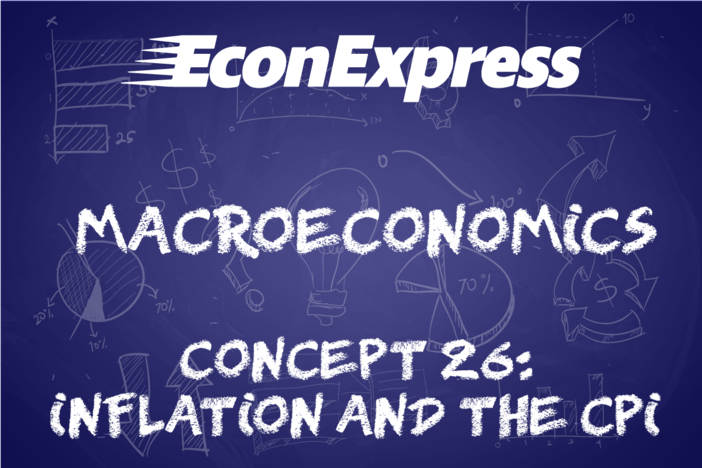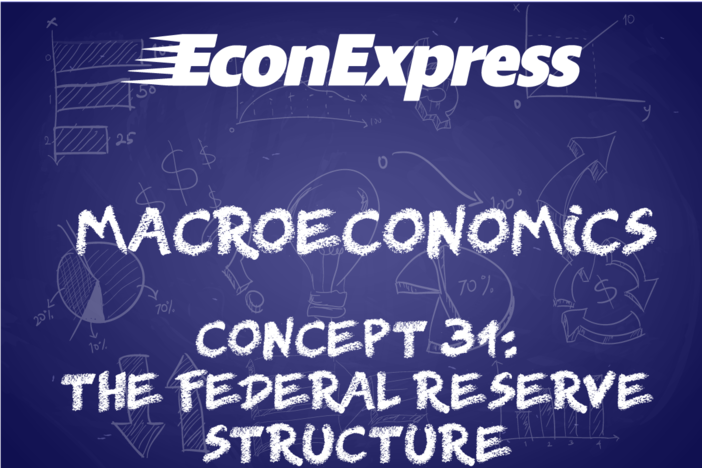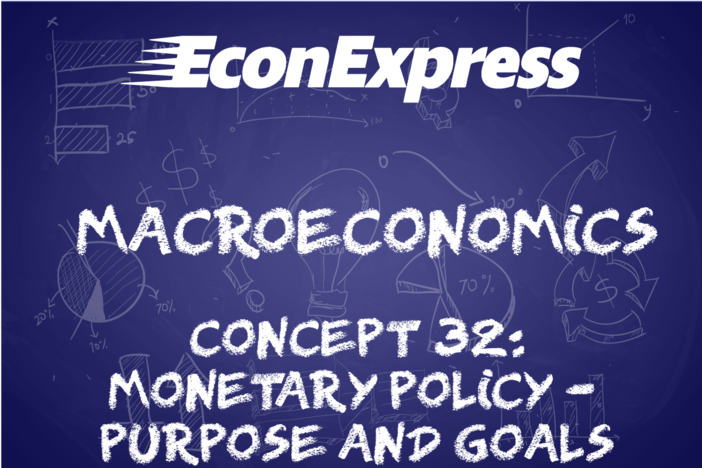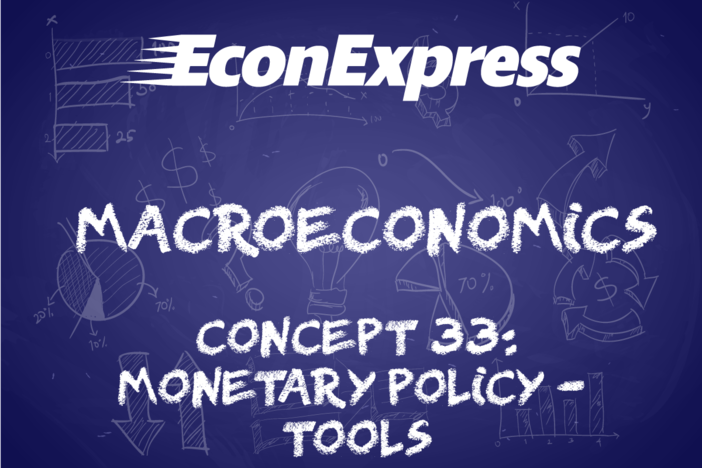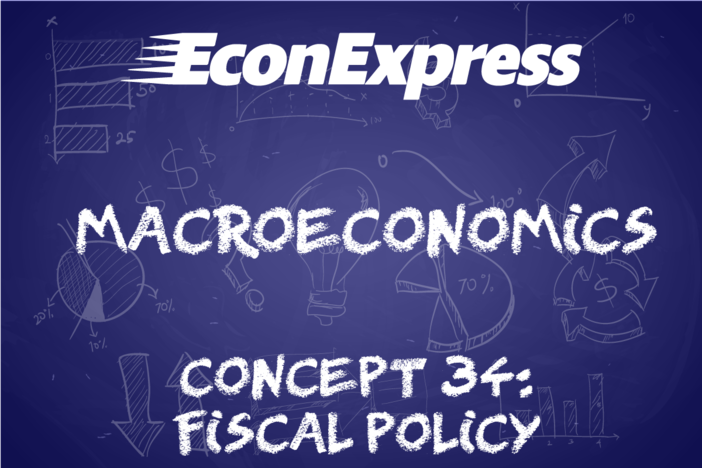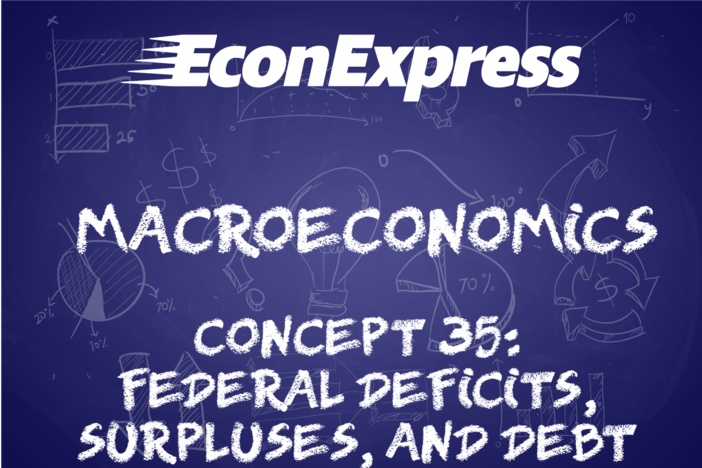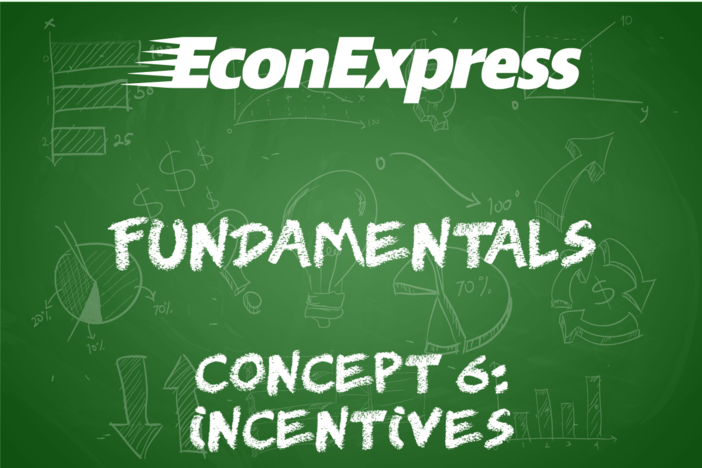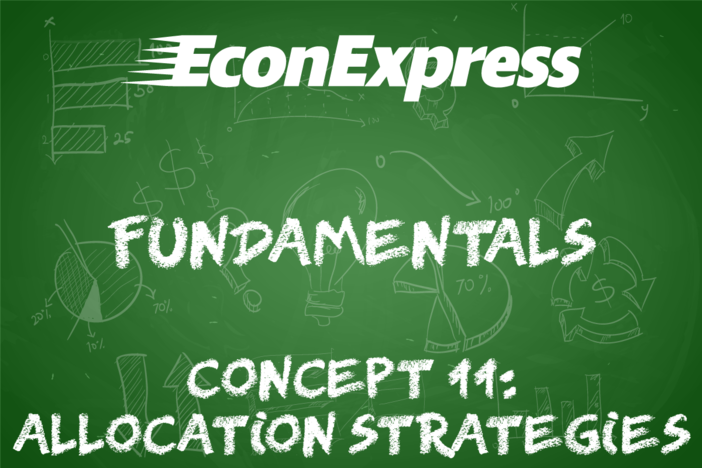Concept 33: Monetary Policy - Tools
Overview: How do you make sure the U.S. has enough money flowing to make transactions, but not too much so that there's not inflation? This lesson explains.
Learn
Beginner

Monetary policy affects the economy by changing the supply of money and the availability of credit. The tools of monetary policy affect the way banks use their reserves – money deposited into checking, savings and other accounts – to make loans to consumers and businesses. There are many complex and detailed tools used by the Federal Reserve (the Fed) to conduct monetary policy. Four of these tools are introduced below and described in detail in the intermediate section.
- Reserve requirements restrict the amount of deposits banks can use to make loans. When banks must keep more cash in reserve, they are able to lend less.
- The discount rate is the interest rate, or cost, for a bank to borrow reserves from the Fed. If the Fed charges a lot for these loans, banks are less likely to borrow and therefore less likely to lend to customers.
- Interest on reserves refers to the amount of money banks earn by keeping reserves at the Fed. If they earn a higher interest rate on those reserves, they are less likely to use the reserves to make loans to customers.
- Open market operations involve buying or selling bonds in an effort to manage the ratio of money to bonds held by banks. The Fed buys different types of bonds, like U.S. Treasury bonds or mortgage-backed securities. When the Fed buys or holds bonds, it increases the reserves of banks and increases the banks’ ability to make loans, thus increasing the money supply.
Intermediate
A key ingredient to understanding the tools of monetary policy is the federal funds rate. The federal funds rate is the interest rate on short-term loans, usually between banks and other institutions that have reserves at the Fed. The basic premise is simple – the higher the federal funds rate, the more expensive money is. Banks will pass on this higher price in the form of higher interest rates for their borrowers, and therefore, the fewer loans consumers and businesses are likely to take. A lower federal funds rate has the opposite effect – making money cheaper and loans more attractive for big purchases like houses, cars, large construction projects and big capital investments. The Federal Open Market Committee – FOMC – communicates about monetary policy by announcing a target range for the federal funds rate. The Federal Funds Rate targets from 2000 – 2021 can be see in Graph 33-1 below.
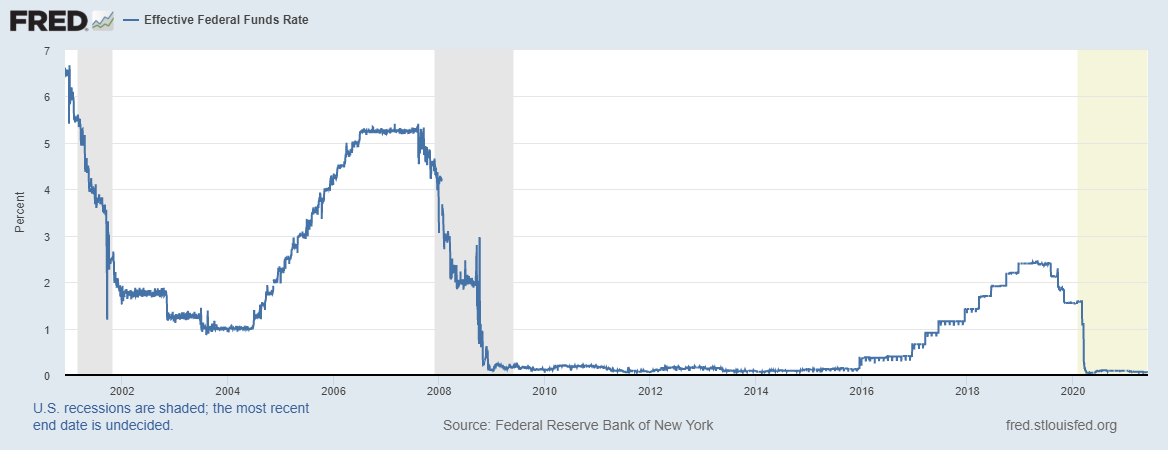
The federal funds rate is a market rate set by commercial banks – NOT the Fed. However, the FOMC uses the tools of monetary policy to influence the federal funds rate in the following ways:
- Reserve requirements: Increasing reserve requirements means banks must hold more reserves and have less money to lend. This makes the available money more expensive and increases interest rates, including the federal funds rate. Decreasing reserve requirements works in the opposite direction as banks have more flexibility with their reserves and can lower the price to encourage borrowers.
- The discount rate: Since this is an interest rate charged by the Fed, it has (at least in theory) a direct relationship with the federal funds rate. A higher discount rate signals banks should charge more for their reserves, and a lower discount rate signals banks should charge less.
- Interest on reserves: Remember, this tool involves the Fed PAYING interest to the banks. The idea is to create an opportunity cost for the bank. Suppose the Fed is paying 2% interest on reserves. It would be unwise for banks to make any loans for less than 2% because they could get that rate guaranteed by the Fed. If the Fed were to raise this amount to 4%, now banks have incentive to raise their rate as well since they could get at least 4% from the Fed. The higher the interest rate on reserves goes, the greater the incentive for banks to lend less and take the guaranteed interest from the Fed.
- Open market operations: This one is a little less intuitive. Instead of directly increasing or decreasing reserves or rates, OMOs involve buying or selling bonds in an effort to manage the ratio of money to bonds held by banks. Imagine banks have two rooms – one with bonds and one with reserves that could be lent. If the Fed comes in and BUYS some of those bonds, they increase the supply of reserves, making those reserves cheaper to lend and, hopefully, increasing lending activity. If the Fed SELLS bonds, the bank takes some of its reserves and uses them to get the bonds, therefore, the room with reserves has a lower supply, and the price of those reserves will increase. You should always think of open market operations from the Federal Reserve viewpoint – Buy = BIGGER money supply, SELL = SMALLER money supply.
The practice activity for this concept will help you understand the overall impact these tools have on the economy. It is important to remember that all of these tools rely on a series of actions by other institutions and consumers to be successful and, thus, monetary policy is not always effective at correcting short-term economic problems. The FOMC can use a wide variety of other tools when there is a crisis in the economy.
Advanced
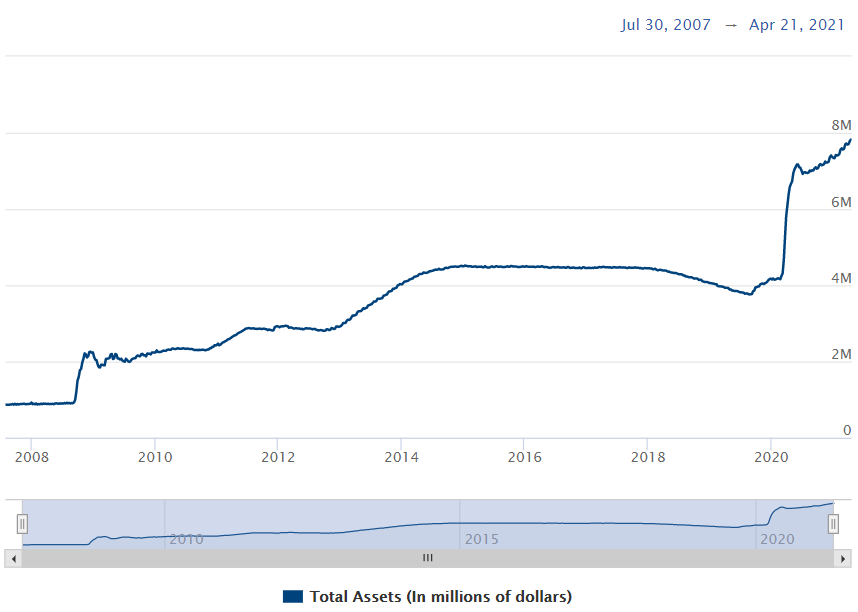
The Federal Reserve publishes a balance sheet on its website every week. It has many details about the types of bonds that the Federal Reserve owns and the reserve balances of the banking system. On the balance sheet, the Federal Reserve shows its assets (like bonds) and liabilities (like reserves that banks have deposited). The other liability on the Fed’s balance sheet is all outstanding U.S. currency. In November, 2020, there was more than $2 trillion in circulation around the world.
Click a reading level below or scroll down to practice this concept.
Practice
Assess
Below are five questions about this concept. Choose the one best answer for each question and be sure to read the feedback given. Click “next question” to move on when ready.
Social Studies 2024
Describe the Federal Reserve Bank’s roles in payment processing, bank supervision, and monetary policy including the dual mandate of price stability and full employment.
Describe how the Federal Reserve uses various tools of monetary policy to target the federal funds rate and how this rate influences other interest rates in the economy.


